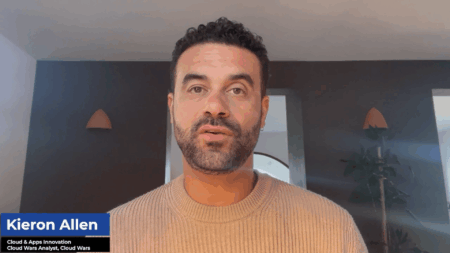In Episode 15 of Acceleration Economy’s Growth Swarm podcast, John Siefert, Bob Evans, Tony Uphoff, and Scott Vaughan discuss retail digital transformation, or how the retail landscape is changing and expanding through technology. It’s no longer about simply walking into a store, nor is it only about e-commerce, especially when the retailer is manufacturing its own products. Today’s retailers are working on combining in-store, online, and customer experiences in new ways, and traditional boundaries between industries are dissolving, with healthcare and banking ripe for retail innovations. On a technology level, this episode covers everything from XR to AI in banking, fashion, grocery stores, and even hotels. It all adds up to a new perception of retail brands that are tightly connected to the customer experience.
Highlights
00:01 — Acceleration Economy Co-Founder and Growth Swarm host John Siefert introduces today’s conversation on the changing retail landscape with 3xCMO Scott Vaughan, 4xCEO Tony Uphoff, and Cloud Wars founder Bob Evans.
01:42 — John kicks off the discussion by talking about how significantly and quickly the pandemic changed e-commerce, turning most companies into online retailers overnight. This had the effect of showing people what was possible, in particular the power of the cloud to connect with consumers and drive revenue through new methods, channels, and experiences.
02:25 — Tony references retail banking’s outdated focus on assets under management and number of branches rather than customer experience enhancements, such as mobile apps and online banking functionality. However, the consumer really wants someone to take the friction out of the customer experience.
04:43 — Even in heavily regulated sectors like banking, there’s room for “wickedly innovative” startups to make noise in the marketplace, and many are already doing so, says Tony.
05:30 — Previously restrictive actions, like wire transfers, are now made entirely seamless through retail banking apps, due largely to innovative startup technology that’s come out and is compliant with the ability to transfer commerce, says John.
06:22 — The shift from “How many branches?” to providing customers with tools for an improved experience is a major transition for banking and wealth management.
07:21 — John references an Industry Cloud Battleground session from SAP on smart store intelligence approach that we’re starting to see which transforms the backend process to enable the front end process to be even cleaner for consumers going into stores or online.
08:00 — Bob considers the industry-specific cloud for retail chains. The retail industry now contains challenges, mechanisms, and experiences far beyond that of simply walking into a store, including retaining employees and manufacturing their own products and consumer packaged goods (CPG), which were traditionally separate industries. As such, many solutions will need to be retail-specific versions of software for manufacturing, CPG, and other areas. It’s no longer one-size-fits-all: The “deconstruction of the software industry” is just beginning, according to Bob.
10:32 — What we’re really talking about is the redefinition of retail, says Scott. Retail’s expansion from walking into a store to e-commerce has led to innovation in UI experiences and direct-to-consumer products, but the category now also encompasses retail services in banking and healthcare. It’s a macro trend, according to Scott.
11:11 — Retail providers are now busy determining how to mash up the in-store experience, the online experience, and the service experience. AI-driven apps and technology are among those tools pushing the entire retail ecosystem forward. These don’t just make it easier for consumers to try on new products, but also to aggregate data to inform the manufacturing of better products.
12:48 — Tony brings up a present phenomenon in shopping: Customers shopping in person for items they will eventually buy online. Smart mirror tech is experimenting with bridging physical dressing rooms with virtual representations of apparel (including sizes and styles) to help make recommendations through AI.
14:31 — Hotel experiences are also becoming more like retail, with convenience features like smartphone keys and more retail operations. Bob points out that industry-specific cloud solutions are on the rise, even as industry boundaries crumble among hotels, stores, and restaurants.
16:00 — John names Nike as another retail example of the increasingly-blurred lines between physical and digital customer experiences.
17:15 — The retail brand experience is changing through underlying Metaverse solutions, including AR and VR applications.
18:05 — Retail is one of the top industries to immediately benefit from a more immersive brand experience. Companies providing consumers with innovative, enhanced environments to preview and purchase products will likely set a new standard for the retail space.
19:48 — John reiterates that we are still in the first inning, and that there is so much more innovation to come. He shares other examples of practical retail innovations, such as apps and technology that help grocery stores source the best local farm-to-table produce and food.
21:21 — Until recently, the challenge for farm-to-table, small-batch-distilleries, and other niche marketplaces was that they were hard to scale, but cloud technology is stepping in to provide a level of scale and cut out friction in supply chain management.
22:41 — Tony references recent comments from Wieden+Kennedy CEO Neal Arthur on differentiating brand awareness through consumer brand experience, then details his own comically less-than-ideal customer experience in a retail store.
25:17 — Bob examines retail store end-caps designed for maximal visibility, suggesting “we’re tilting into a world of infinite endcaps.” How do retail advertisers get that leg up in the Metaverse space?
26:28 — John wraps the discussion by reviewing many of the industries about to experience reimagined business models.









